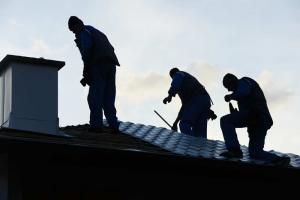Preventing Water Damage After Storms: Identifying and Fixing Roof Entry Points
Even minor cracks or loose shingles can create water entry points, leading to hidden damage that becomes costly if left unaddressed.”
HAMMOND, LA, UNITED STATES, November 20, 2024 /EINPresswire.com/ -- After severe weather, homeowners often face the challenge of addressing roof damage and the risk of water infiltration. Undetected water entry points can lead to significant structural damage, mold growth, and costly repairs if not promptly identified and repaired. Earl Carr, Jr., president of Gulf 52 in Hammond, Louisiana, shares insights on how homeowners can identify and mitigate roof damage after storms.— Earl Carr, Jr.
"Storm damage is often deceptive," Carr explains. "Even minor cracks or loose shingles can create water entry points, leading to hidden damage that becomes costly if left unaddressed."
Identifying Roof Damage After a Storm
Homeowners are encouraged to conduct an initial visual inspection after a storm. While professional assessments are essential, identifying visible damage early can help mitigate further issues. Key indicators include:
Missing or Damaged Shingles: High winds can displace shingles, leaving gaps that expose the underlying roofing material to water infiltration.
Cracked or Loose Flashing: Flashing around roof joints, chimneys, and skylights may become dislodged or damaged during storms, allowing water to seep through.
Debris Accumulation: Branches, leaves, or other debris can block gutters or create pooling water on the roof, increasing the risk of leaks.
Sagging or Uneven Rooflines: Visible dips or sagging areas may indicate water saturation and structural compromise.
Carr emphasizes the importance of engaging a professional for a comprehensive inspection, as storm damage often extends beyond what is visible to the untrained eye.
Common Water Entry Points
Storms frequently create vulnerabilities in specific areas of the roof. Understanding these common water entry points can help homeowners address issues promptly:
Chimneys and Vents: Flashing around chimneys and roof vents is highly susceptible to storm damage. If seals are compromised, water can easily infiltrate these areas.
Skylights: Damaged seals or cracked glass around skylights can lead to leaks during heavy rainfall.
Roof Valleys: Debris buildup or damaged shingles in roof valleys can cause water to pool, increasing the risk of leaks.
Clogged Gutters: Blocked gutters and downspouts prevent proper drainage, causing water to overflow and seep into the roof or foundation.
Steps to Fix Water Entry Points
Once water entry points are identified, timely repairs are crucial to prevent further damage. Common solutions include:
Shingle Replacement: Damaged or missing shingles should be replaced to restore the roof’s protective barrier and prevent further water intrusion.
Flashing Repairs: Cracked or loose flashing around chimneys, skylights, and vents must be resealed or replaced to ensure a watertight seal.
Debris Removal: Clearing gutters and removing debris from the roof facilitates proper drainage and prevents water pooling.
Sealing and Resealing: Vulnerable areas, such as roof valleys and skylight seals, often require resealing to block water entry.
Importance of Timely Repairs
Delaying roof repairs can lead to long-term consequences, including structural damage and health risks. Even minor water infiltration can compromise insulation, drywall, and support structures, weakening the home’s framework over time.
Mold growth is another significant concern. Mold can develop within 24 to 48 hours of water exposure and spread quickly, posing respiratory risks to occupants. Timely repairs prevent these hazards and help protect both the home and its residents.
"Addressing storm-related roof damage promptly is essential for protecting the home’s structural integrity and avoiding more extensive repairs later," Carr advises.
Professional Assessments and Preventative Measures
While homeowners can perform preliminary inspections, professional assessments are critical to identifying hidden damage and ensuring comprehensive repairs. Working with licensed contractors ensures that all water entry points are addressed and that repairs meet safety and building code standards.
Preventative measures, such as installing impact-resistant shingles, reinforcing flashing, and maintaining gutters, can reduce the risk of storm-related damage in the future.
Conclusion
Roof damage from storms is a common issue for homeowners in Louisiana, but proactive steps can minimize long-term consequences. Identifying water entry points, addressing repairs promptly, and engaging professionals for thorough assessments are key to maintaining a safe and structurally sound home.
Morgan Thomas
Rhino Digital, LLC
+1 504-875-5036
email us here
Visit us on social media:
Facebook
Legal Disclaimer:
EIN Presswire provides this news content "as is" without warranty of any kind. We do not accept any responsibility or liability for the accuracy, content, images, videos, licenses, completeness, legality, or reliability of the information contained in this article. If you have any complaints or copyright issues related to this article, kindly contact the author above.


